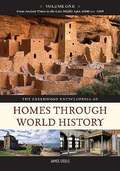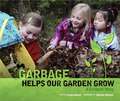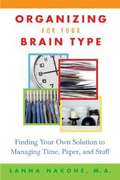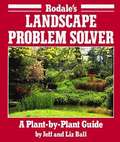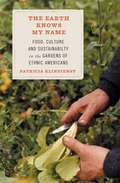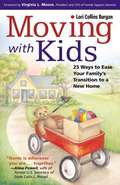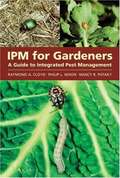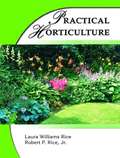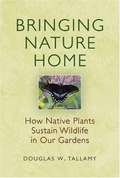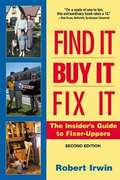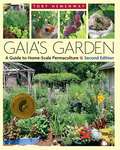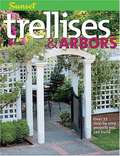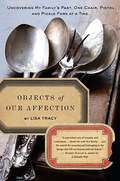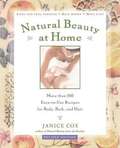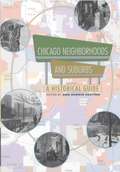- Table View
- List View
The Greenwood Encyclopedia of Homes Through World History, Volume 2: The Renaissance to the Industrial Revolution, 1201–1750
by James SteeleSteele (author and educator, U. of Southern California) provides a comprehensive survey of the housing of significant cultures from throughout the world: the Americas, Africa, Asia and Australasia, East and Southeast Asia, and Europe and the Western Mediterranean. The three-volume set spans the development of housing from ancient times to the present. While the author discusses materials used and methods of construction, he also delves into how the housing of different societies reflects their belief systems, social orders, and cultures. From the relatively familiar stone structures of Macchu Picchu to the Chinese residential districts known as hutongs, the array of architectural styles and the considerations incorporated into their construction--such as environment, light, protection, and available materials--provide a fascinating journey through history. Organized in an encyclopedic format, the set is clearly written, informative, and well-illustrated. Annotation ©2009 Book News, Inc., Portland, OR (booknews.com)
The Greenwood Encyclopedia of Homes Through World History, Volume 1: From Ancient Times to the Late Middle Ages, 6000 BCE–1200
by James SteeleSteele (author and educator, U. of Southern California) provides a comprehensive survey of the housing of significant cultures from throughout the world: the Americas, Africa, Asia and Australasia, East and Southeast Asia, and Europe and the Western Mediterranean. The three-volume set spans the development of housing from ancient times to the present. While the author discusses materials used and methods of construction, he also delves into how the housing of different societies reflects their belief systems, social orders, and cultures. From the relatively familiar stone structures of Macchu Picchu to the Chinese residential districts known as hutongs, the array of architectural styles and the considerations incorporated into their construction--such as environment, light, protection, and available materials--provide a fascinating journey through history. Organized in an encyclopedic format, the set is clearly written, informative, and well-illustrated. Annotation ©2009 Book News, Inc., Portland, OR (booknews.com)
Garbage Helps Our Garden Grow: A Compost Story
by Linda GlaserWhat is that garbage doing next to the garden? It's not garbage. It's compost! Amazing things happen inside a compost bin. In go banana peels, grass clippings, and even an old jack-o'-lantern. Out comes compost. The compost goes into the garden to make the soil rich for new plants. Compost is good for the earth. Composting also helps us make less garbage. In this book, you can watch as one family makes compost for their garden and also learn how to start your very own compost bin!
Organizing for Your Brain Type: Finding Your Own Solution to Managing Time, Paper, and Stuff
by Lanna Nakone Arlene TaylorAn astute, fun guide to organizing that offers tailored and specific advice-that actually works-on how to get and stay organized. Based on Lanna Nakone's experience as a professional organizer and the science of brain function, this engaging, practical book begins with a fun quiz so readers can determine which of the four distinct thinking and organizing types they display: - Maintaining Style (routine) - Prioritizing Style (logical) - Harmonizing Style (interconnected) - Innovating Style (creative). Then, matching their brain type with a custom profile of maintainable organizing routines, readers will be able to effectively tackle the stacks of paper, poorly managed time, and clutter in their homes and offices. Readers will also gain insight into the other brain types and how each type can best work with and understand the others. Organizing for Your Brain Type turns the task of managing life into an enjoyable experience.
Rodale's Landscape Problem Solver: A Plant by Plant Guide
by Jeff Ball Liz BallA companion to Rodale's garden problem solver which treats vegetables, fruits, and herbs; and to a forthcoming volume which will deal with perennials, annuals, and bulbs.
Rodale's Flower Garden Problem Solver: Annuals, Perennials, Bulbs and Roses
by Jeff Ball Liz BallOffers a "medicine cabinet" of ideas for identifying and correcting common problems without using dangerous chemicals.
The Earth Knows My Name: Food, Culture, And Sustainability In The Gardens Of Ethnic Americans
by Patricia KlindienstInspired by her own family's immigrant history, Patricia Klindienst traveled the country, gathering stories of urban, suburban, and rural gardens created by people rarely presented in books about American gardens: Native Americans, immigrants from across Asia and Europe, and ethnic peoples who were here long before our national boundaries were drawn. In The Earth Knows My Name, she writes about the beautiful gardens she discovered, each one an island of hope, offering us a model-on a sustainable scale-of a truly restorative ecology. "A moving tribute to those who keep the ancient love of the land in their hearts, and who stand up to the giants of agrobusiness in their fight to preserve their cultural heritage." -Dr. Jane Goodall, DBE, founder of the Jane Goodall Institute, UN Messenger of Peace, and author of Harvest for Hope: A Guide to Mindful Eating "Carefully weaving the threads of the cultures that were here before with those that came later, Klindienst makes her case for the deep, life-giving integrity of the earth . . . This is a poignant book that shows, without undue sentimentality, the underlying element we all share and can bring to life with our hands." -Edie Clark, Orion Patricia Klindienst is a master gardener and an award-winning scholar and teacher. She lives in Guilford, Connecticut, and teaches creative writing each summer at Yale University.
Curtains, Draperies and Shades
by Sunset Publishing StaffWhether you're shopping for ideas or looking for how-to information--or both--this book will guide you in planning and making your window treatments.
Root Cellaring: Natural Cold Storage of Fruits and Vegetables
by Mike Bubel Nancy BubelAnyone can learn to store fruits and vegetables safely and naturally with a cool, dark space (even a closet!) and the step-by-step advice in this book.
Moving with Kids: 25 Ways to Ease Your Family's Transition to a New Home
by Lori Collins Burgan Virginia L. MasonThirteen million children in the U. S. each year leave behind familiar people and places to move to new homes across town and across the country. Moving can be hard for parents too, as they not must not only prepare themselves but also help their children cope with the changes. In Moving with Kids, social worker and mother of three Lori Collins Burgan offers 25 practical, action-oriented tips for parents before, during, and after a move. Tips include giving kids a sense of control and involvement in the move, making the physical move less stressful, and creating a sense of belonging in a new home. Written with busy parents in mind, this book is accessible and concise-perfect for anyone looking to help children adjust to a move.
IPM for Gardeners: A Guide to Integrated Pest Management
by Raymond A. Cloyd Philip L. Nixon Nancy R. PatakyMany nurseries, land-use agencies, and public gardens now require the use of IPM as an intelligent, real-world system to raise plants in an environmentally responsible manner.
Perfection Salad: Women and Cooking at the Turn of the Century
by Laura ShapiroPerfection Salad presents an entertaining and erudite social history of women and cooking at the turn of the twentieth century. With sly humor and lucid insight, Laura Shapiro uncovers our ancestors widespread obsession with food, and in doing so, tells us why we think as we do about food today. This edition includes a new Introduction by Michael Stern, who, with Jane Stern, is the author of Gourmet magazine's popular column Roadfood and the book Eat Your Way Across the U. S. A.
Practical Horticulture (5th edition)
by Laura Williams Rice Robert P. RiceA textbook for a course in horticultural design for non-majors, and a reference for both amateur and professional ornamental gardeners. Explains the fundamentals of horticulture and techniques for growing plants inside and outside. Updated from the 1993 edition (first in 1986) with new photographs and bibliographical references, and new information on floral arrangements and pesticides. Annotation c. by Book News, Inc., Portland, Or.
Landscape Design, Construction, and Maintenance
by Ronald J. Biondo Charles B. SchroederNIMAC-sourced textbook
Introduction to Horticulture (4th edition)
by Charles B. Schroeder Eddie Dean Seagle Lorie M. Felton John M. Ruter William Terry Kelly Gerard KrewerThe Fourth Edition of Introduction to Horticulture represents a major step forward for horticulture books in agricultural education. The attractive, student-friendly book has been expanded and made much more appealing. Changes from the prior editions have made this book increasingly useful in the hands of students.
Bringing Nature Home: How Native Plants Sustain Wildlife In Our Gardens
by Douglas W. TallamyBy growing native plants, suburban gardeners can play an important role in helping create sustainable ecosystems. Believing that knowledge will generate interest in being part of the solution, Tallamy (entomology and wildlife ecology, U. of Delaware in Newark) explains why biodiversity is crucial and what to plant to encourage beneficial insects. The gently persuasive book includes color photos; a listing of landscape-worthy, wildlife-attracting native plants by U. S. region; summary table of host plants of butterflies and showy moths; and experimental evidence for the ability of native as vs. alien plants to attract beneficial insects. Annotation ©2008 Book News, Inc. , Portland, OR (booknews. com)
How to Build a House with an Architect
by John M. BakerBuilding a house with an architect should be fun. The experience should be one of the most exciting and creative efforts in one's entire life. It can only be so, however, if the client and the architect enjoy that special rapport that comes from understanding how a house is designed and constructed.
The Oxford Companion to the Decorative Arts
by Harold OsborneThe scope of this Companion extends over all the main fields of decorative craftsmanship--as well as a number of minor and specialized ones. It includes prehistoric crafts, crafts like leather-working and ceramics that have arisen more recently, and specialized crafts, such as toys and embroidery. There are also entries on important craftsmen and schools and surveys of specific cultures and periods. All the articles are written by expert contributors and the text is illustrated throughout with photographs and line drawings.
Cut Your Energy Bills Now: 150 Smart Ways To Save Money And Make Your Home More Comfortable And Green
by Bruce HarleyAn engineer specializing in energy efficiency, Harley conducts seminars on construction, energy codes, and related topics. Here he offers homeowners advice on such matters as lighting and plug-in appliances, big appliances, hot water, heating and cooling, air leaks to the outside, insulation, and windows and doors. A chapter also suggests how to plan energy fixes by looking at a house as a single complex system. In many cases, he includes photographs of the work actually being done, but does not provide step-by-step details. Annotation ©2009 Book News, Inc. , Portland, OR (booknews. com)
Find It, Buy It, Fix It: The Insider's Guide To Fixer-Uppers
by Robert Irwin"Find It, Buy It, Fix It", by best selling author Robert Irwin, will not only save readers money, but will also help them make money from fixer-upper properties. This is a one-stop guide for anyone considering the possibility of buying or investing in houses, apartments, and commercial properties that need work. You'll find loads of moneymaking and money-saving advice on how to find the best fixer-uppers, inspect the properties to avoid "money pits", identify ugly duckling properties that need only quick cosmetic fixes. It also provides you with information on how to team with top experts to make deals happen quickly and easily, and make low-ball offers that sellers will accept and structure deals to achieve win-win outcomes.
Gaia's Garden: A Guide to Home-scale Permaculture
by Toby Hemenway"Gaia" (not in the glossary) refers to the view that the Earth is a living, interconnected organism. The associate editor of The Permaculture Activist, who gardens in Southern Oregon, treats gardens as backyard ecosystems. The book includes organic garden design illustrations, and such useful information as the differences between immature and mature ecosystems, a garden designer's checklist, plants for attracting wildlife, and resources. Annotation c. Book News, Inc. , Portland, OR (booknews. com)
Trellises And Arbors
by Steve Cory Sunset Publishing StaffThere are so many reasons readers will get attached to this new edition of Sunset's best-selling "Trellises & Arbors". For starters, it's all new, and expanded with 32 pages and over 250 brand-new photographs, many of which show how other homeowners have used obelisks, arbor benches, eye-catching latticework, and vegetable supports to provide privacy, form outdoor rooms, frame garden paths, and give climbing vines and roses a place to thrive. Then there are the projects themselves--more than 40 in all, ranging from a simple fan trellis to a dramatic tunnel arbor, giving builders of all skill levels a range of ways to create stunning garden focal points. Best of all, these projects use standard-dimension lumber and don't require special woodworking skills. Features: expanded edition with 32 additional pages, over 250 new how-to photographs, over 40 projects for beginning to advanced woodworkers, classic trellis and arbor designs that enhance any setting, and a new techniques chapter with information on safety, cutting methods, setting posts, and pouring concrete.
Objects of Our Affection: Uncovering My Family’s Past One Chair, Pistol, and Pickle Fork at a Time
by Lisa TracyTracy delves into the history of the furniture, china, jewelry, and other memorabilia inherited from five generations of her family, only to discover that these items bring her face-to-face with the people who had collected them. bw photos throughout.
Natural Beauty at Home: More Than 250 Easy-to-Use Recipes for Body, Bath, and Hair (2nd edition)
by Janice CoxA REVISED EDITION OF THE BESTSELLING GUIDE TO EASY AND EFFECTIVE HOME BEAUTY TREATMENTS FROM AMERICA'S NATURAL BEAUTY EXPERT. Marie Antoinette Masque. Orange-Mint Toner. Pineapple Body Seltzer. Coconut-Almond Lip Gloss. Fizzing Bath Bombs. You'll learn how to make all of these--and hundreds more--easily with Natural Beauty at Home. Author Janice Cox has been concocting her own home beauty treatments for nearly thirty years and shows us how economical, satisfying, and fun it can be. This newly revised second edition of her book contains more than 250 simple but remarkably effective home treatments for cleansers and scrubs, toners and skin fresheners, creams and lotions, shampoos and conditioners, nail and lip care treatments--even children's products. And all of the recipes feel as delicious as they sound! Because you control production, you know that only the freshest natural ingredients are used and that no artificial colors, preservatives, or fragrances are added--and no animal testing is done. Also included is comprehensive information on the basic equipment you'll need, where to find ingredients, storage and refrigeration tips, and much more. If you love products from natural beauty boutiques but don't like the prices, you'll delight in creating your own favorite recipes from Natural Beauty at Home.
Chicago Neighborhoods and Suburbs: A Historical Guide
by Ann Durkin Keating"Which neighborhood?" It's one of the first questions you're asked when you move to Chicago. And the answer you give--be it Bucktown, Bronzeville, or Bridgeport--can give your inquisitor a good idea of who you are, especially in a metropolis with 230 very different neighborhoods and suburbs to choose from. Many of us, in fact, know little of the neighborhoods beyond those where we work, play, and live. This is especially true in Chicagoland, a region that spans over 4,400 square miles and is home to more than 9. 5 million residents. In Chicago Neighborhoods and Suburbs, historian Ann Durkin Keating sheds new light on twenty-first-century Chicago by providing a captivating yet compact guide to the Midwest's largest city. Keating charts Chicago's evolution with comprehensive, cross-referenced entries on all seventy-seven community areas, along with many suburbs and neighborhoods both extant and long forgotten, from Albany Park to Zion. Thoughtful interpretive essays by urban historians Michael Ebner, Henry Binford, Janice Reiff, Susan Hirsch, and Robert Bruegmann explore how the city's communities have changed and grown throughout the years, and sixty historic and contemporary photographs and additional maps add depth to each entry. From the South Side to the West Side to the North Side, just about every local knows how distinctive Chicago's neighborhoods are. Few of us, however, know exactly how they came to be. Chicago Neighborhoods and Suburbs brings the city--its inimitable neighborhoods, industries, and individuals--to life, making it the perfect guidebook for anyone with an interest in Chicago and its history.
